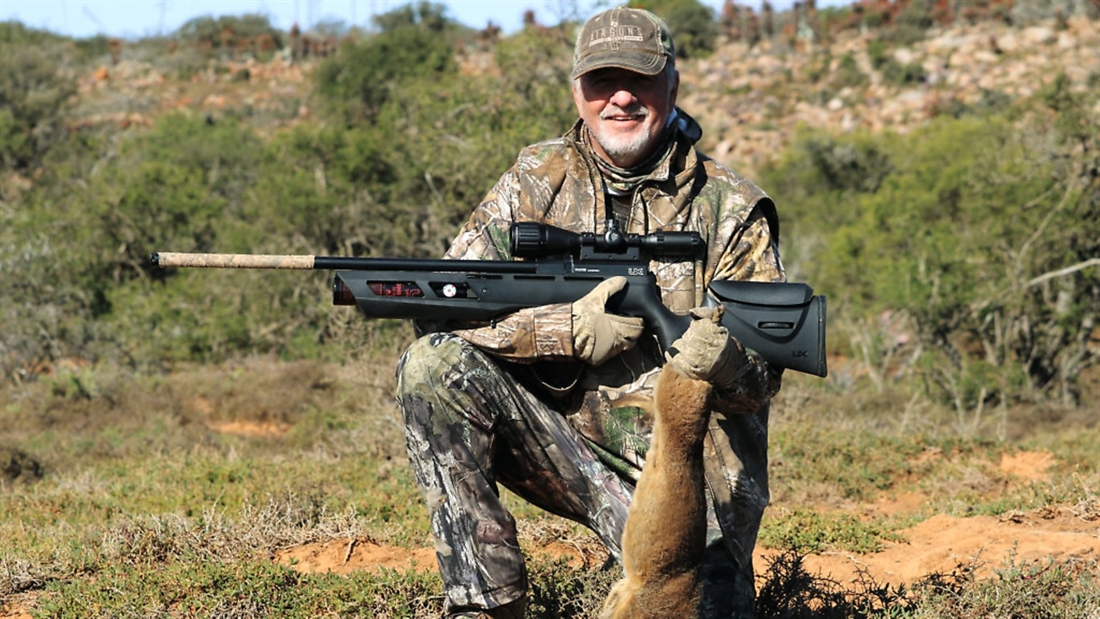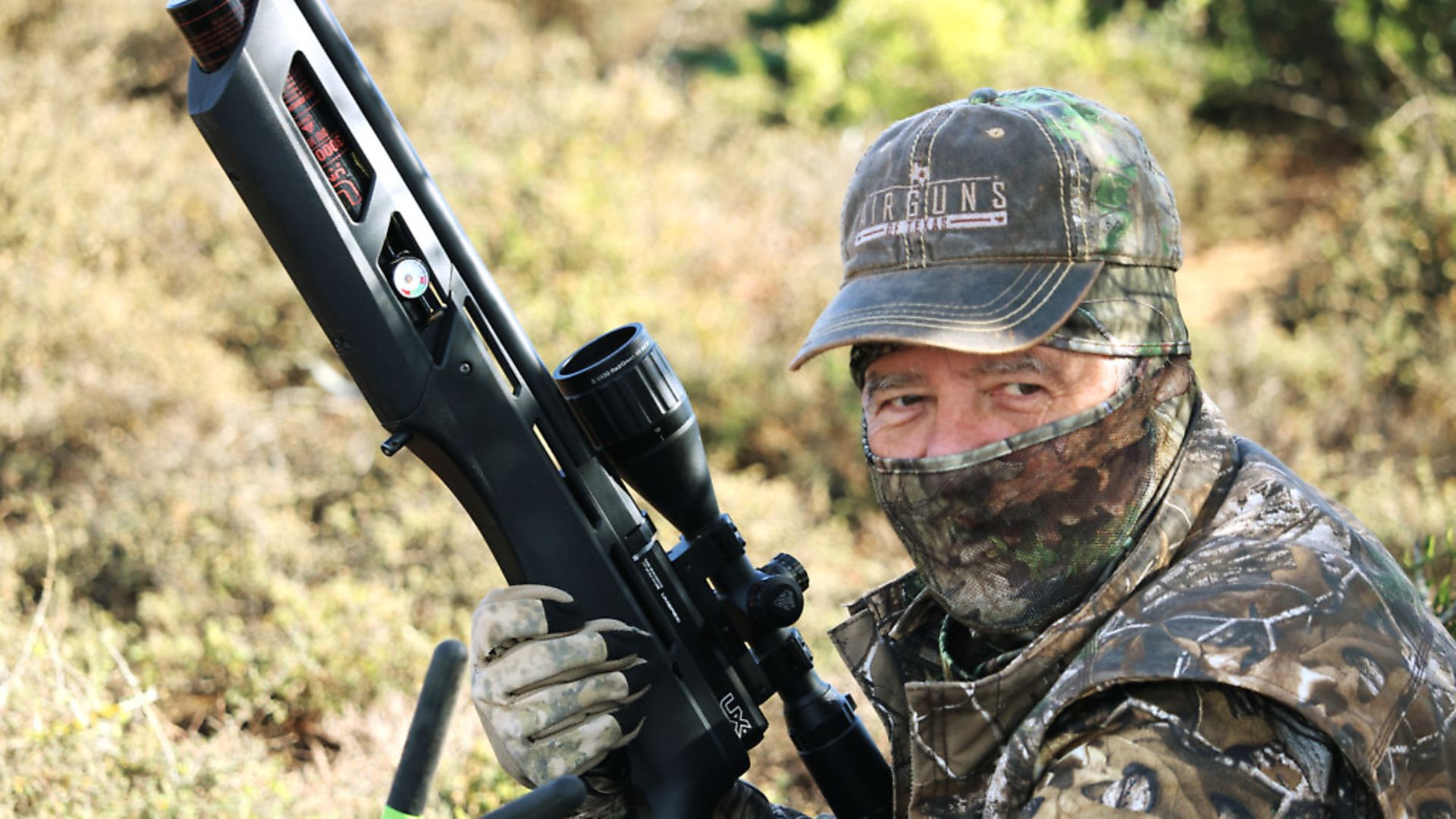A Hyrax Hunt in South Africa
Jim Chapman is travelling again, this time to the dark continent credit: Archant I was visiting a friend’s farm in South Africa, and in addition to hunting plains game, I intended to do some varminting. I have been hunting this property for close to 15 years, and have come to know it quite well, and
Would you like to appear on our site? We offer sponsored articles and advertising to put you in front of our readers. Find out more.
Jim Chapman is travelling again, this time to the dark continent
I was visiting a friend’s farm in South Africa, and in addition to hunting plains game, I intended to do some varminting. I have been hunting this property for close to 15 years, and have come to know it quite well, and even though the pest populations are dynamic, I had a pretty good idea of where to start my search.
Whilst most of the property is given over to wildlife, it is a working small stock farm so there is always a multitude of nuisance animals coming in to raid his feed lots from the adjacent wild areas. I decided that during my breaks from hunting plains game, I would take one of my small game rifles, and thin out some of the hyrax that were starting to spread into the stock production areas.
There is a rugged area with rocky cliffs situated close to the agricultural land adjacent to the farm. The cliffs border a lambing yard and the dassie were spreading into the pastures, where they dig large and deep holes precisely where the livestock grazes. The farm owner had told me that it would be helpful to thin some out in this area, but this was the only place he wanted them culled. Many years ago, there had been a bounty on hyrax, but these days most landowners leave them alone unless they start to overpopulate and move into areas where they are not welcomed. I stood at the base of a cliff and glassed the area from far off, and saw several dassie on the rocks, with many more in the surrounding grasslands. If I moved slowly toward them, they would run away before dropping down their burrows, so the tactic I employed was to slip inside of 100 yards, then tuck myself into the shade of a thorn tree behind a pile of rocks and wait for the less wary animals to resurface.
Tenacious
During a couple days of varmint hunting for hyrax, I used two guns; the Umarex Gauntlet .22 and the Ataman M2 in .30. The Gauntlet can be pre-ordered and will ship soon. Just the month before this trip I’d been in Arkansas filming segments for our programme ‘The American Airgunner’, and we’d had the first opportunity to run the Gauntlet through its paces. I’d been quite impressed with the accuracy and consistency, and the rifle produces approximately 30 ft.lbs. in .22. Alhough it’s a larger rifle, I found the ergonomics to be quite reasonable. The bolt-action was smooth, and reliably cycled the 8-round magazine, which bears striking resemblance to the Theoben/Crosman-style magazine. The gun fills to 3000 psi, but is regulated to 1100 psi, producing an incredibly low shot-to-shot variation over a 50-shot string. By the way, the Gauntlet is priced at under $300.00 in the States, which is setting this rifle up to be a game changer.
I’d had a lot more experience with my second small-game rifle, the Ataman M2 in .30 calibre. This rifle is powerful at approximately 100 ft.lbs., can print sub ½” 60-yard groups, has a smooth and fast-cycling, side-lever action that auto indexes the 7-round magazine, and it is a reliable and shootable platform. The rifle fills to 300 BAR (4350 psi) via a proprietary fill probe, and we had an Omega 4500 psi compressor and a couple carbon-fibre bottles on hand to keep my rifles charged and ready to go. Just a couple days earlier, I’d used this set-up, along with 44 grain JSB Exact pellets, to drop a nice springbok ram at 50 yards, so I was feeling very comfortable with the rifle on the much smaller, although very tenacious, hyrax.
Nuisance
The hyrax goes by many names, but it is usually called ‘the dassie’ in South Africa. They can grow to 4kg, and live in small groups of 8-10 animals. Hyrax are a unique species that is a distant relative of the elephant, and use ambient heat to regulate their body temperature. You will often find them out sunning themselves on the rocks or lying in the lower branches of scrub brush. In a way, they look like very large guinea pigs, but when you get up close you’ll notice their residual tusks, which to me always seem a bit out of place. These animals are viewed as a situational pest these days, and in most places, they are left alone. However, in this area the indigenous predators were not keeping up with the population increase, and they were becoming a localised nuisance.
On the first outing, my rifle of choice was the Ataman and its preferred projectile, the JSB 44 grain .30 calibre Diabolo pellet. I glassed the area and found a place with cover to settle in, then used my rangefinder to mark a few reference markers. Even with velocities over 900 fps, the trajectory of the pellet means you must have a very good idea of the distance to your target. After about 20 minutes, I spotted the outline of a head under a cliff overhang, looking in my direction. As I started to raise my rifle for the shot, I noticed a closer one 60 yards away that had come out to lie in the sun. I laid the crosshairs about an inch high and squeezed the trigger, watching as the dassie slumped and slid down the rock, coming to rest in the pile of boulders below.
I had one in the bag, and I sat and waited for over a half hour for another to resurface, but a break in the action made me decide to move on, and as is my habit, I first picked up my binos for a fast look around. Halfway up the face of a nearby cliff, I spotted another dassie looking at me. It was sitting on a ledge, and started to walk away as I watched, but then stopped and looked back in my direction, so I sent a pellet flying at his head, which in turn sent him dropping to the ground below.
A couple days later, I headed back to the same area with the Gauntlet, but this time I altered my location slightly so that I could hunt the burrows on the flats rather than shoot up into the cliffs. My tactics were similar; I found a shaded spot with a bit of cover, and put my rifle up on sticks with my pack hanging down and providing a little additional cover. I had to wait about a half hour, but eventually a couple of dassie popped up, and one about 50 yards away seemed oblivious to my covered position.
There was a strong wind blowing, and after a bit of internal debate, I moved the horizontal position by one mil-dot to the left. I’d sighted the rifle in at 50 yards, so held dead centre on the hyrax’s head. I squeezed the trigger and watched the pellet miss by a hair’s breadth, as the dassie dropped down, but then came right back out. I think the low report of the rifle, along with the wind-generated disturbances had covered my flubbed shot to some degree. Taking advantage of my second chance, I moved another half mil-dot to the left and squeezed the trigger, and this time was rewarded by the hollow thud of a perfect head shot.
Both guns did the job for me, but still I thought about which would be my first choice for future small-game hunts. I think the .30 calibre Ataman allows one to reach out further and offers more latitude with respect to shot placement, although with a limited shot count and a louder bark. The Gauntlet provided the accuracy for pinpoint shot placement and enough power to get the job done downrange. It provides a high shot count with great consistency, and it is quiet. I was not confident enough to take body shots at the ranges I was shooting, though, and if the opportunity had arisen for a larger pest species or predator I’d have been loth to take the shot. So, in the end it comes down, as is usually the case, to how the gun will be used, and personal preference. I will say that I’d have no qualms taking out either of these rifles if I were to repeat this hunt!
Related articles
Get the latest news delivered direct to your door
Subscribe to Airgun World







